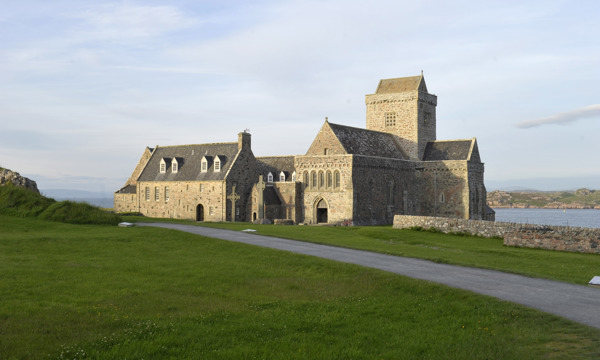Archaeologists from the University of Glasgow working with HES have uncovered conclusive evidence that a wooden hut traditionally associated with St Columba at the monastery on the island of Iona does indeed date to his lifetime in the late sixth century AD.
The process of carbon dating has led to the significant breakthrough, which categorically proves samples of hazel charcoal, unearthed from an excavation of a wattle and timber structure on Iona 60 years ago, dates back to the exact period Columba lived and worked at the Hebridean monastery. It may be the monk’s ‘cell’ where he prayed and studied in isolation.
The samples, excavated in 1957 by Professor Charles Thomas, were kept in his garage in Cornwall, preserved in matchboxes, until 2012 when they were given to HES predecessor body Historic Scotland.
A University of Glasgow team of archaeologists then identified the significance of the finds and recently submitted the samples for carbon dating.
Until recently the finds from the site were believed to be missing, but a project led by University of Glasgow archaeologists Dr Ewan Campbell and Dr Adrián Maldonado, funded by ourselves, re-located the samples.
Commenting on the findings, Dr Maldonado said: “This discovery is massive. St Columba is a key figure in Western Christendom and Thomas always believed he’d uncovered Columba’s original hut, but could never prove it because the technology wasn’t there at the time.
“This is as close as any archaeologist has come to excavating a structure built during the time of St Columba.
"It’s vindication of the archaeological instincts of Thomas and his team and a remarkable lesson in the value of curating excavation archives for as long as it takes, to make sure material is ready for the next wave of technology.”
Richard Strachan, Senior Archaeologist said: “This work is hugely significant. The radiocarbon dates have confirmed the Tòrr an Aba structure excavated in the 1950s to be consistent with Columba’s presence on Iona in the 6th Century AD and provides compelling evidence this was Columba’s writing hut, as described by Adomnán.
“It endorses Thomas’s meticulous curation of his archive for over 60 years ago and demonstrates the huge value in its re-examination. The team at the University of Glasgow done an amazing job synthesising his extensive excavation. It’s just a huge regret Professor Thomas did not live to see these results.”
For further information
Barry McPherson
Historic Environment Scotland Media Office
Direct Line: 0131 668 8097
Mobile: 07813 357722
barry.mcpherson@hes.scot

